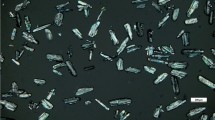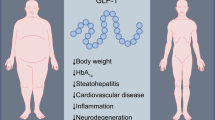Abstract
The development of peptide-based formulations presents numerous challenges to the formulator due to their complexity, delicate structure and sensitivity towards external environment factors. To date, the commonly employed routes for delivering peptide based formulations are intramuscular, intravenous and subcutaneous routes. Though oral route enables improved patient compliance and ease of administration, it remains still unexplored due to enzymatic degradation of peptides in the gastrointestinal tract and their poor permeation across the intestinal epithelial membrane. In the present study, we have developed a novel systemic approach for novel delivery of therapeutic peptides. Insulin glargine, teriparatide, liraglutide, leuprolide were used as model oral peptides. The peptide granules were formulated with various combinations of metal inhibitors, reducing agents, p-glycoprotein inhibitors and permeation enhancers and administered orally to animals using enteric coated capsules. Enzyme activity for proteolytic enzymes was assessed, also blood plasma concentration and bioavailability of peptides obtained from the animal study were compared to commercial formulations.
Graphic Abstract




Similar content being viewed by others
Data Availability
Not applicable.
Code Availability
Not applicable.
Abbreviations
- CAGR:
-
Compound annual growth rate
- GLP:
-
Glucagon like peptide
- rhPTH:
-
Human recombinant parathyroid hormone
- hGH:
-
Human growth hormone
- MIRA:
-
Metal ions and reducing agents
- ELISA:
-
Enzyme-linked immunosorbent assay
- NDA:
-
New drug application
- MCC:
-
Microcrystalline cellulose
- UPLC:
-
Ultra performance liquid chromatography
- BABIM:
-
Amidinobenzimidazole
- IG:
-
Insulin glargine
- TP:
-
Teriparatide
- LA:
-
Leuprolide acetate
- LS:
-
Liraglutide sodium
References
Anderson RA, Bryden NA, Polansky MM (1992) Dietary chromium intake. Biol Trace Elem Res 32(1):117–121
Aungst BJ et al (1996) Enhancement of the intestinal absorption of peptides and nonpeptides. J Control Release 41(1–2):19–31
Badmaev V, Prakash S, Majeed M (1999) Vanadium: a review of its potential role in the fight against diabetes. J Altern Complement Med 5(3):273–291
Buettner GR (1990) Ascorbate oxidation: UV absorbance of ascorbate and ESR spectroscopy of the ascorbyl radical as assays for iron. Free Radic Res Commun 10(1–2):5–9
Crans DC et al (2004) The chemistry and biochemistry of vanadium and the biological activities exerted by vanadium compounds. Chem Rev 104(2):849–902
Davison A, Kettle A, Fatur D (1986) Mechanism of the inhibition of catalase by ascorbate. Roles of active oxygen species, copper and semidehydroascorbate. J Biol Chem 261(3):1193–1200
de Cassia Pereira J et al (2017) Effect of metal ions, chemical agents and organic compounds on lignocellulolytic enzymes activities. Enzyme Inhib Activ 29:139–164
Duffy B et al (1998) Transition metals as protease inhibitors. Biol Trace Elem Res 64(1):197–213
Falk I (1918) The influence of certain salts on enzyme action. J Biol Chem 36(1):229–247
Grob D (1946) Proteolytic enzymes: I. The control of their activity. J Gen Physiol 29(4):219–247
Guerrieri N et al (1999) Vanadium inhibition of serine and cysteine proteases. Comp Biochem Physiol A 122(3):331–336
Ishida N et al (1980) Interaction of amino acids with transition metal ions in solution (I) solution structure of L-lysine with Co (II) and Cu (II) ions as studied by nuclear magnetic resonance spectroscopy. Agric Biol Chem 44(2):263–270
Katz BA et al (1998) Design of potent selective zinc-mediated serine protease inhibitors. Nature 391(6667):608–612
Li X, Yang Z (2015) Dissection of the binding of l-ascorbic acid to trypsin and pepsin using isothermal titration calorimetry, equilibrium microdialysis and spectrofluorimetry. RSC Adv 5(45):35487–35496
Lind SE, McDonagh JR, Smith CJ (1993) Oxidative inactivation of plasmin and other serine proteases by copper and ascorbate. Blood 82(5):1522–1531
Lupina T, Cripps H (1987) UV Spectrophotometry Determination of Piperine in Pepper Preparations: Collaborative Study. J Assoc off Anal Chem 70(1):112–113
Misra SK et al (2015) Anisotropic magnetic field observed at 300 K in citrate-coated iron oxide nanoparticles: effect of counterions. J Nanopart Res 17(12):1–11
Mitragotri S, Burke PA, Langer R (2014) Overcoming the challenges in administering biopharmaceuticals: formulation and delivery strategies. Nat Rev Drug Discovery 13(9):655–672
Moulin A et al (2007) Inhibition of chymotrypsin by a complex of ortho-vanadate and benzohydroxamic acid: structure of the inert complex and its mechanistic interpretation. Biochemistry 46(20):5982–5990
Norazmi N et al (2017) Uric acid detection using uv-vis spectrometer. IOP Conf Ser: Mater Sci Eng. https://doi.org/10.1088/1757-899X/257/1/012031
Nowak P, Zgirski A (2003) Effects of metal ions on activity of plasmin. Biol Trace Elem Res 93(1–3):87–94
Patil S et al (2019) Formulation of therapeutic proteins: strategies for developing oral protein formulations. Innov Dos Forms: Des Dev Early Stage. https://doi.org/10.1002/9783527812172.ch12
Peptide Therapeutics Market - Growth, Trends, COVID-19 Impact, and Forecasts (2021-2026) (2021) https://www.mordorintelligence.com/industry-reports/peptide-therapeutics-market
Plapinger RE (1959) Ultraviolet absorption spectra of some hydroxamic acids and hydroxamic acid derivatives. J Org Chem 24(6):802–804
Riordan JF (1977) The role of metals in enzyme activity. Ann Clin Lab Sci 7(2):119–129
Sastry K, Gupta P (1978) In vitro inhibition of digestive enzymes by heavy metals and their reversal by chelating agent: Part I. Mercuric chloride intoxication. Bull Environ Contam Toxicol 20(1):729–735
Sato AK et al (2006) Therapeutic peptides: technological advances driving peptides into development. Curr Opin Biotechnol 17(6):638–642
Schmitz W et al (1982) Effect of vanadium in the +5, +4 and +3 oxidation states on cardiac force of contraction, adenylate cyclase and (Na+ + K+)-ATPase activity. Biochem Pharmacol 31(23):3853–3860
Trumbo P et al (2001) Dietary reference intakes: vitamin A, vitamin K, arsenic, boron, chromium, copper, iodine, iron, manganese, molybdenum, nickel, silicon, vanadium, and zinc. J Am Diet Assoc 101(3):294–301
Tyagi P, Pechenov S, Subramony JA (2018) Oral peptide delivery: translational challenges due to physiological effects. J Control Release 287:167–176
Uhlig T et al (2014) The emergence of peptides in the pharmaceutical business: from exploration to exploitation. EuPA Open Proteom 4:58–69
Vlieghe P et al (2010) Synthetic therapeutic peptides: science and market. Drug Discov Today 15(1–2):40–56
Wälivaara B et al (1996) Blood protein interactions with chromium surfaces. J Biomater Sci Polym Ed 8(1):49–62
Acknowledgements
The authors are thankful to Jubilant Biosys Ltd for carrying the animal studies. The authors are acknowledge Anya Biopharma Inc for funding. The authors are grateful to University Grants Commission for the UGC-SAP fellowship [F.25-1/2014-15(BSR)No.F.8-10/2007(BSR)], Indian Council of Medical Research (ICMR), (No. 3/1/3/JRF-2015/HRD-LS/29/31232/85) and Department of Biotechnology (BT/PR10865/AAQ/3/659/2014), Government of India for fellowship.
Funding
Anya Biopharm, UGC-SAP fellowship [F.25-1/2014-15(BSR)No.F.8-10/2007(BSR)], Indian Council of Medical Research (ICMR), (No. 3/1/3/JRF-2015/HRD-LS/29/31232/85) and Department of Biotechnology (BT/PR10865/AAQ/3/659/2014).
Author information
Authors and Affiliations
Contributions
SP, KG and AP contributed in acquisition of data, analysis and interpretation of data. BD and SG contributed to conception and design of the study. PD and RJ contributed in drafting the article or revising it critically for important intellectual content.
Corresponding authors
Ethics declarations
Conflict of interest
The authors have no competing interest.
Ethical Approval
Ethical approval was taken by Jubilant Biosys Ltd from appropriate ethical committee for conducting animal studies.
Consent to Participate
Not applicable.
Consent for Publication
Not applicable.
Additional information
Publisher's Note
Springer Nature remains neutral with regard to jurisdictional claims in published maps and institutional affiliations.
Supplementary Information
Below is the link to the electronic supplementary material.
Rights and permissions
About this article
Cite this article
Patil, S., Gupta, K., Pandit, A. et al. Oral Delivery of Peptide Formulations and Their Cellular Evaluation. Int J Pept Res Ther 27, 2831–2844 (2021). https://doi.org/10.1007/s10989-021-10293-x
Accepted:
Published:
Issue Date:
DOI: https://doi.org/10.1007/s10989-021-10293-x




